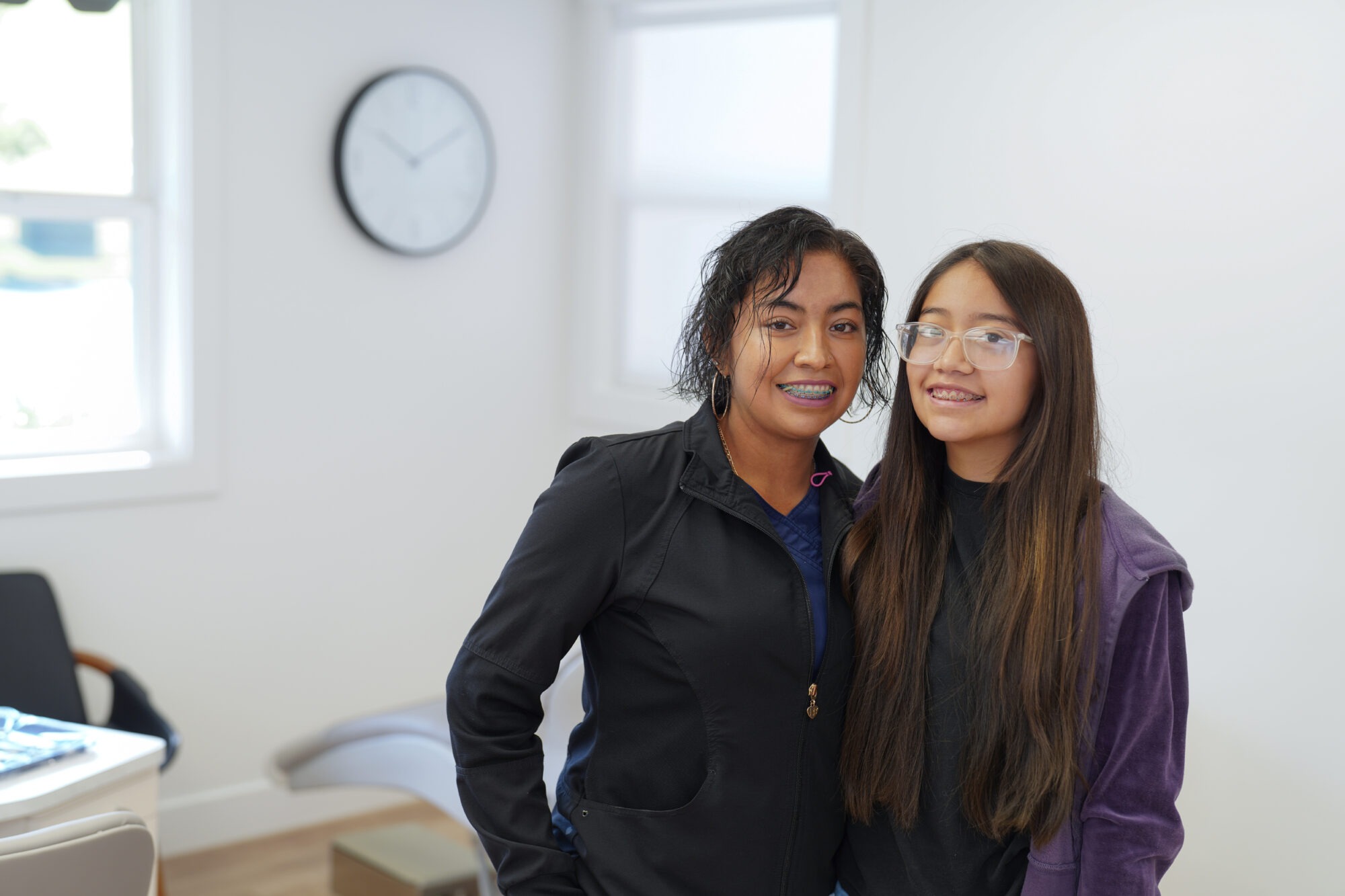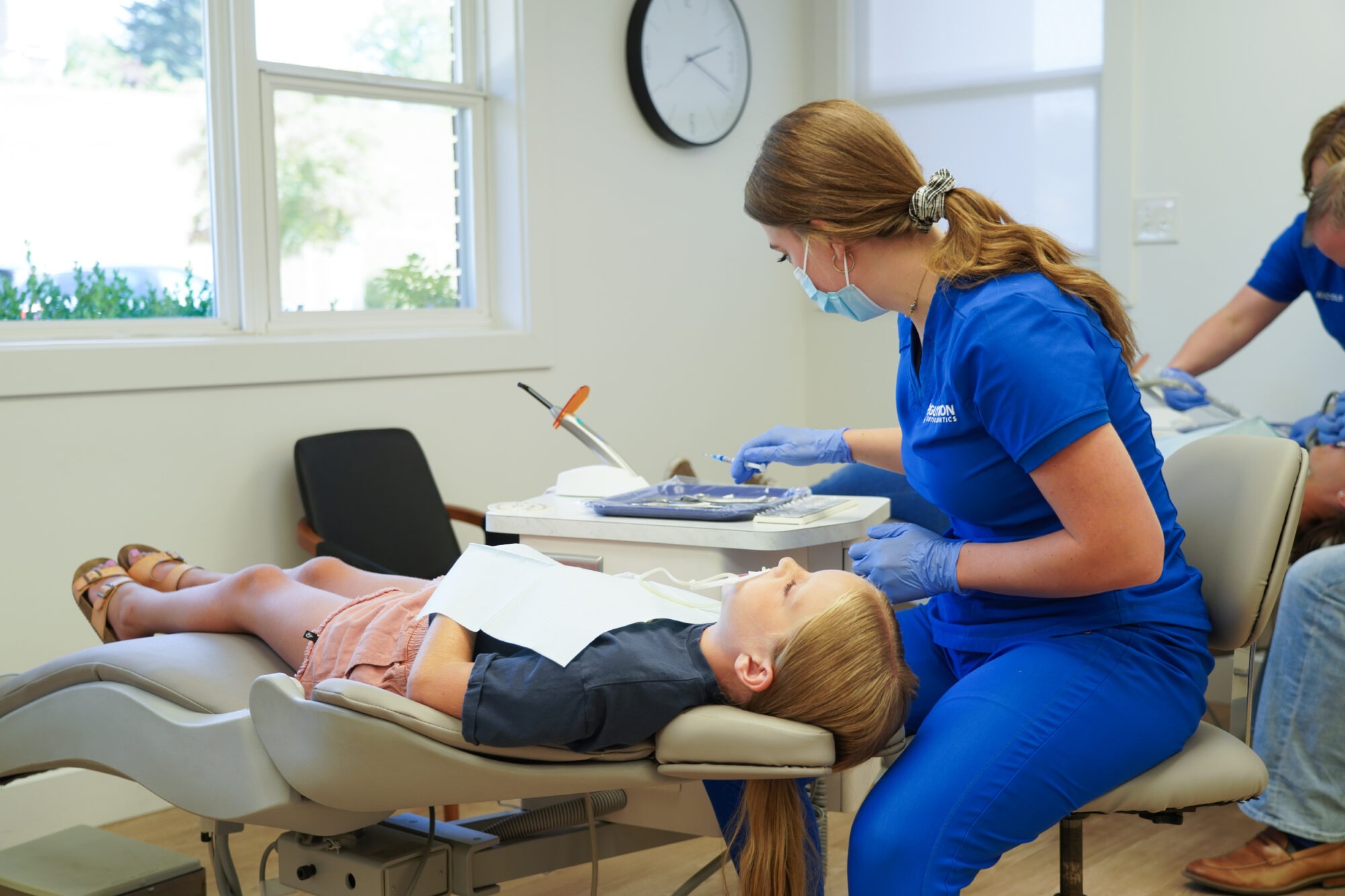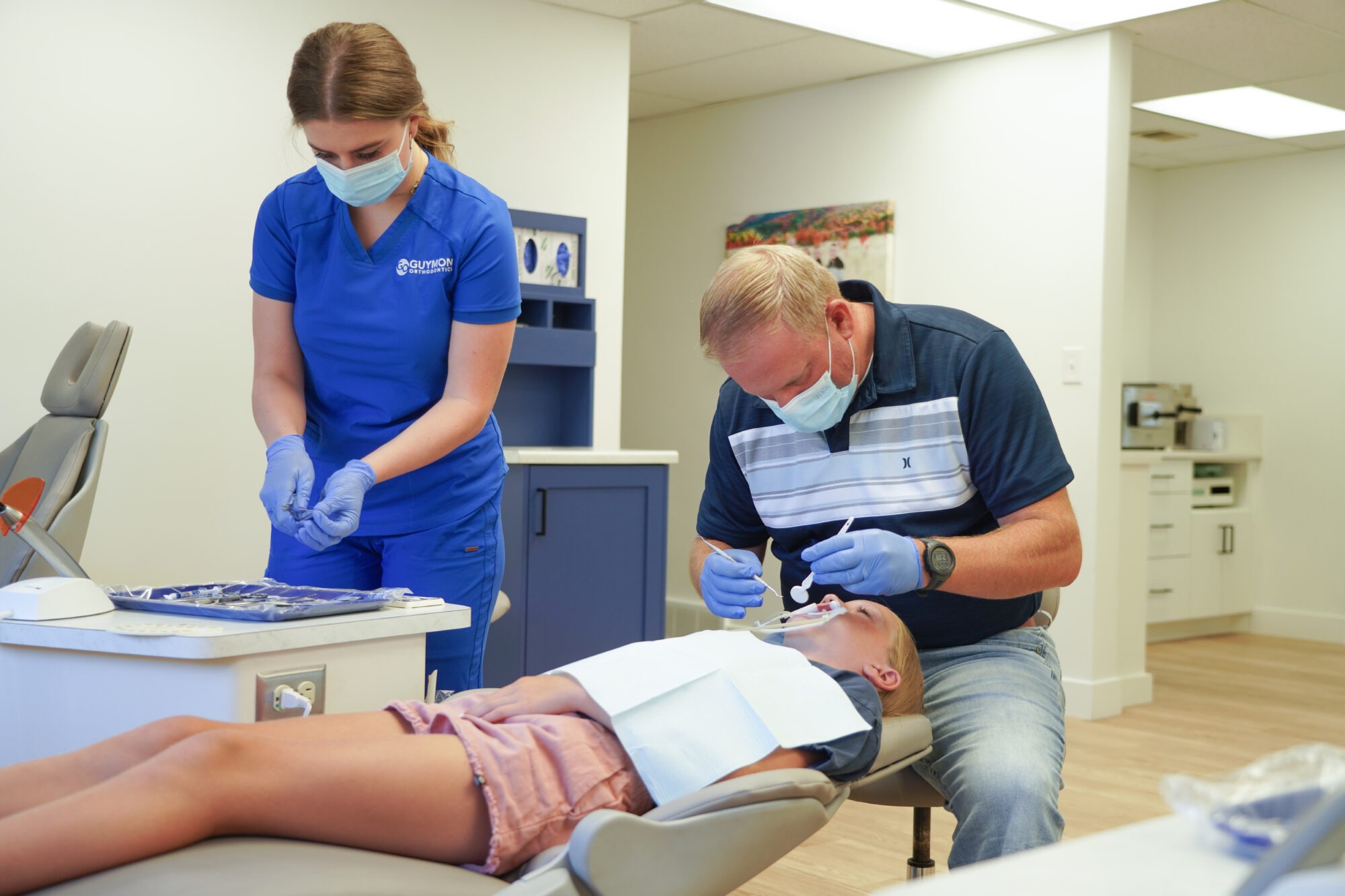What Treatment Options Are Used During Two-Phase Treatment?
If you want straighter teeth, you might naturally assume braces are the solution. But sometimes, when certain problems exist, it’s not as simple as jumping into a full set of braces. One orthodontic solution is called Two-Phase Treatment. It does involve teeth straightening, but that’s only the beginning! And while getting it can rarely prevent those braces from ever happening, typically, the point is to make the process of braces a whole lot smoother.
Corrective, long-term options like braces can be very intimidating for young children and their parental figures. Guymon Orthodontics is committed to ensuring processes like this one are completed safely and effectively for all patients and that you know precisely what you’re going into before beginning your treatment. So, what treatment options are used during Two-Phase Treatment? Well, it all starts with a diagnosis.
Reasons for Treatment
First and foremost, there are a whole lot of reasons for selecting this process that Dr. Guymon might identify in a consultation. A few common examples identified in children include:
- Early loss of primary teeth
- Overbites
- Underbites
- Crossbites
- Oversized jaws
- Speech issues
- Thumb-sucking after age five
- Difficulty biting or chewing
- Flared upper bite
- Pacifier use
- Spacing
- Crowding
When these issues arise, Two-Phase Treatment might just be the way to go! This method can be preventative (actively preventing future issues) or interceptive (addressing an existing problem). So, let’s talk a bit more about the hows and whys of this treatment.
Phase One
The first phase is sometimes called early interceptive treatment. It occurs between the ages of six and ten for most children, prior to all of their permanent teeth coming in. The biggest goal of this step is to handle problems involving baby teeth and to avoid issues like overcrowding prior to that full set of braces. If a child is already dealing with crowding, it can also help alleviate that. Phase One can allow all of the permanent teeth a neat, comfortable fit. Typically, this phase takes anywhere from nine to 18 months.
There are a pretty wide variety of tools an orthodontist can choose for Phase One based on a patient’s individual needs. Some of these examples might be difficult to picture if you aren’t well-versed in orthodontics! Here is a short overview of a few of them:
Phase One Options
- Limited braces
These are just what they sound like! Limited braces are only placed on certain teeth that are causing problems. They are confined to the upper and lower six front teeth.
- Functional appliances
These devices have been used for decades to help correct bite alignment. An example is the Herbst appliance, which utilizes muscle movement and jaw growth to restore normal alignment. Other examples include the Binator, the Activator, and Twin Block appliances.
- Headgear
One of the most common functional appliances is headgear. There are a few different options based on certain scenarios, but the overall objective is to guide the growth of the jaw and control the movement of teeth.
- Space maintainers
These literally “maintain” the gap left by a missing baby tooth. They can be fixed or
removable.
- Expansion appliances
These devices broaden the upper teeth and jaw. For palate expansion, a mold is made of upper and lower arches. This expander can be worn from six months to a full year.
- Removable retainer
This is a custom device that is worn, usually to straighten out the bite.
Resting Period
Many orthodontists will also recommend a resting period between these two stages. During this time, the remaining incoming permanent teeth are left undisturbed as they start to come in. This allows a break for the patient and can involve a space maintainer or retainer to help suspend the process before moving on.
Phase Two
This phase is the one most people expect from the get-go—braces! These familiar devices are placed on both rows of teeth. It usually takes place when most, if not all, permanent teeth have completely erupted. Usually, this begins when a patient is around eleven or twelve years old. Braces are mainly used to straighten teeth, but they also resolve issues with the jaw, like overbites and underbites. One key variable is the timeframe of the braces. Depending on the child and their dental situation, the duration can vary from 12 months to a number of years. During this time, the child will regularly visit their provider to assess the progress and maintenance of the treatment.
Benefits of Two-Phase Treatment
Now that you know more about the options and goals of Two-Phase Treatment, let’s cover some of the advantages of it!
Improved Self-Esteem and Confidence
Of course, the primary goal of this treatment is related to dental health—but in many instances, excellent dental health can contribute to improved mental health! When you love how your smile looks, it can change everything. Seeing the transformation over time to an attractive, straight smile has a huge impact. Especially in younger patients, this is a key psychological benefit. It is well worth the wait!
Prevention of Future Treatment
Addressing these issues during childhood can allow the patient a much happier dental journey as an adult! Typically, adult dentistry is a lot more complicated and burdensome. So, getting it taken care of early is certainly ideal. Two-Phase treatment can even prevent serious procedures like jaw surgery or the removal of permanent teeth.
Less Time Wearing Full Braces
This is a big one! Braces can be a bit complicated to maintain for kids, especially at first. Having a thorough preparation in the first phase will ideally make the second a lot less strenuous.
Schedule a Consultation with Guymon Orthodontics Today!
If you feel any of this information applies to your child, Dr. Guymon’s Logan office is the perfect place to go! Our team will ensure that all young people are well taken care of and set up for a happy, healthy dental experience throughout their lives! You can schedule a free consultation on our website or give us a call at (435)752-5991.



